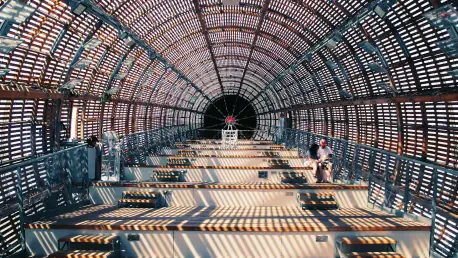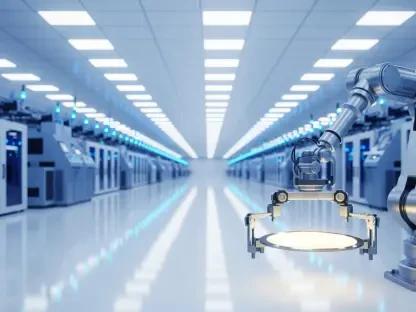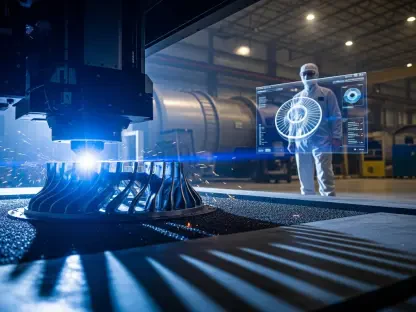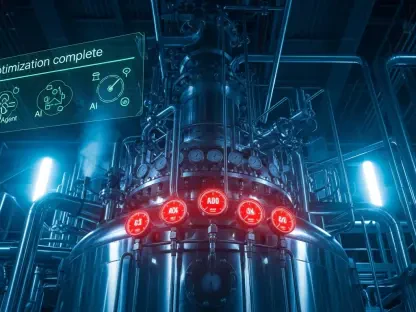What if the secret to building safer, more efficient nuclear reactors lies in a technology that constructs materials layer by layer with pinpoint precision? At Argonne National Laboratory, a team of dedicated scientists is exploring this very possibility through the use of additively manufactured (AM) steels, and their cutting-edge research could redefine the future of nuclear energy by tackling some of the industry’s toughest challenges with innovative materials.
Unlocking Nuclear Potential with Advanced Materials
The stakes for nuclear power are incredibly high. As global energy demands soar, the need for reliable, clean energy sources becomes more pressing. Nuclear reactors hold immense promise, yet their components must endure extreme conditions that push materials to the limit. Argonne’s exploration into AM steels offers a potential breakthrough, aiming to create parts that not only withstand these harsh environments but also allow for designs previously thought impossible.
This research isn’t just a scientific curiosity—it’s a critical step toward enhancing the safety and efficiency of nuclear power. By leveraging additive manufacturing, specifically Laser Beam Powder Bed Fusion (PBF-LB), scientists are crafting steels like 316H and Alloy 709 (A709) with unique properties. The implications could ripple across the energy sector, paving the way for next-generation reactors that are both cost-effective and robust.
The Critical Role of AM Steels in Energy Innovation
Nuclear reactors operate under punishing conditions: scorching temperatures, intense pressure, and relentless radiation. Materials used in these environments must be exceptionally durable, as even a small failure can lead to disastrous outcomes. Traditional manufacturing of steels has served the industry well, but it often lacks the flexibility to create complex shapes and can be prohibitively expensive.
Additive manufacturing changes the game by building components layer by layer, allowing for intricate geometries that optimize performance. At Argonne, the focus on AM steels addresses a vital question: can these materials match or surpass the reliability of conventionally made steels under nuclear stress? If successful, this approach could significantly reduce production costs while improving reactor designs.
Diving Deep into the Science of AM Steels
At the heart of Argonne’s studies are two specific AM steels—316H, a long-standing choice for reactor parts, and A709, an alloy tailored for high-temperature sodium fast reactors. The PBF-LB process used to create these materials introduces rapid heating and cooling cycles, resulting in distinct microstructural traits. These include a high density of dislocations, which enhance strength but also heighten internal stress and fracture risks.
Further complexity arises from nano-oxides, tiny defects inherent in AM steels, which obstruct dislocation movement and hinder grain growth during heat treatment. For AM 316H, recrystallization—a process that forms new, stress-free grains—requires temperatures hundreds of degrees higher than in traditional versions. Meanwhile, AM A709 boasts superior tensile strength at room temperature and 550°C, driven by its dislocation density and heat-treatment-induced precipitates.
These insights directly impact key reactor performance metrics like creep resistance for 316H and high-temperature durability for A709. Using advanced tools at Argonne’s Center for Nanoscale Materials (CNM) and Advanced Photon Source (APS), researchers track real-time changes in material structure. Such data is crucial for predicting how these steels might behave in actual nuclear settings, offering a foundation for future innovations.
Voices from the Frontier of Materials Research
The transformative potential of this work resonates deeply with Argonne’s experts. A leading materials scientist on the project noted, “Additive manufacturing unlocks design possibilities for nuclear components that were once out of reach, but understanding these materials at their core is essential.” This perspective underscores the meticulous approach taken by the team to unravel the complexities of AM steels.
High-energy X-ray diffraction at APS has been instrumental, revealing how nano-oxides in AM 316H impede recovery during heat treatment. For A709, groundbreaking analysis of its AM form shows tensile strength surpassing that of traditional counterparts, marking it as a promising candidate for advanced reactors. These findings, rooted in rigorous testing, highlight both the remarkable strengths and unique hurdles of AM materials, driving the need for creative problem-solving.
Strategies to Harness AM Steels for Nuclear Advancements
For engineers aiming to integrate AM steels into nuclear designs, Argonne’s research provides practical pathways. Heat treatment protocols must be customized, as standard methods for traditional steels fall short. In the case of 316H, higher temperatures are necessary to overcome nano-oxide barriers and achieve recrystallization, ensuring material stability under stress.
Balancing strength with structural integrity is another key focus. The high dislocation density in AM steels can be managed through precise heat treatment adjustments to minimize internal stresses without compromising durability. This equilibrium is vital to prevent long-term failures in the harsh nuclear environment, where reliability is non-negotiable.
Additionally, adopting real-time characterization techniques, like those utilized at APS, allows for fine-tuned processing of AM components. Monitoring microstructural evolution during heat treatment ensures that each material’s unique needs are met. Such data-driven strategies are essential for developing dependable parts for cutting-edge reactors, setting a new standard for nuclear engineering.
Reflecting on a Milestone in Nuclear Material Science
Looking back, the strides made by Argonne National Laboratory in exploring additively manufactured steels stand as a pivotal moment for nuclear technology. The detailed examination of 316H and A709 revealed not only their potential but also the tailored approaches needed to overcome inherent challenges. Moving forward, the industry must prioritize refining these heat treatment methods to fully harness the benefits of AM steels. Continued collaboration between researchers and engineers will be crucial to translate these findings into real-world applications, ensuring that nuclear power remains a safe, sustainable energy source for generations to come.









